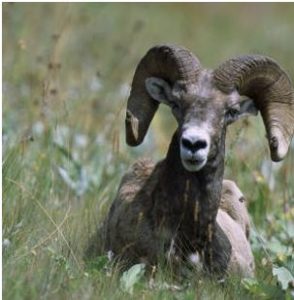We have much more to do and your continued support is needed now more than ever.
Celebrate Women in Conservation this Women’s History Month

Women are making an impact. But their contributions to wildlife conservation often go unrecognized. Women are leaders in the conservation field and climate action movement through their powerful roles as business owners, scientists, educators, NGO leaders, writers, and activists.
Unfortunately, women are poorly represented in national and international decision-making about climate change (less than 25% of the head delegates in recent international climate negotiations were women!), despite the fact that women in the U.S. and around the world will be disproportionately impacted by climate change. Indigenous women, women from low-income communities, and many women in developing countries bear a heavier burden from the impacts of climate change because they are more likely to rely on natural resources, live in areas with poor infrastructure, or be responsible for food production and water collection.

Recognizing women’s achievements and celebrating their leadership is not only deserved, but necessary to reach the goal of protecting our communities, landscapes, and wildlife from the impacts of climate change. It is thanks to many women that we have the Clean Power Plan, EPA’s rule to limit carbon pollution from existing power plants; a strong clean energy industry; and a conservation movement that protects wildlife for generations to come.
Let’s celebrate! Below are some of the conservation women leaders that we have decided to highlight. To share a woman in conservation that you admire use #ConservationWomen.
Historical Women in Conservation
Rachel Carson (1907 – 1964)

Rosalie Edge (1877 – 1962)
Edge was a woman’s suffragist and species preservation advocate, who during the great depression was considered the U.S.’s “most militant conservationist”. She pushed the conservation community to take stronger measures and protect a wider range of bird species. In 1934 she founded the world’s first preserve for birds of prey, Hawk Mountain Sanctuary in Pennsylvania. She was also successful in leading grassroots campaigns and lobbying congress to create national parks and purchase old-growth forest.
Wangari Maathai (1940 – 2011)

Marjory Stoneman Douglas (1890 – 1998)
Douglas was a journalist for the Miami Herald and activist defender of the Florida Everglades from the dangers of development and pollution. In 1947 she wrote the book The Everglades: River of Grass, which helped redefine the Everglades as a treasured river rather than a worthless swamp. This work helped galvanize people to protect the Everglades.
Margaret “Mardy” Murie (1902 – 2003)

Mollie Beattie (1947 – 1996)
Beattie was the first woman appointed to be director of the U.S. Fish and Wildlife Service. While there, she was integral in landmark environmental laws such as the Endangered Species Act and the Clean Water Act. Some of her most notable accomplishments include overseeing the reintroduction of the grey wolf to Yellowstone and the creation of fifteen new wildlife refuges. “In the long term, the economy and the environment are the same thing. If it’s unenvironmental it is uneconomical. That is the rule of nature.”
Donella Meadows (1941 – 2001)
Meadows was an environmental scientist most famous for authoring Limits to Growth, a discussion of the consequence of interactions between the Earth and human systems. In addition to this publication she was also a professor at Dartmouth College in New Hampshire and founder of the Sustainability Institute, a place for research on global systems and practical demonstrations of sustainable living.
Gina McCarthy: Today’s Clean Power Plan Champion

McCarthy has taken the President’s call to act on climate and made it one of her top priorities for the EPA, most notably through the release of the Clean Power Plan rule. In her speech announcing the CPP, she said this:
“It’s no accident that our proposal is a key piece of President Obama’s Climate Action Plan—and key to American leadership in our global climate fight. Although there’s still much work to do to get carbon pollution down to safe levels, I’m hopeful when I see the progress we’ve made. I’m hopeful because I see the pattern of perseverance that defines America.”
Even before the Clean Power Plan and her role as administrator, McCarthy had many conservation successes. McCarthy oversaw the development of the first mercury and air toxics standards which delivered huge protections to wildlife like the bald eagle, as well as public health benefits for many Americans. McCarthy also helped design and implement strong national fuel economy standards and launched a successful No Child Left Inside program in Connecticut.
![]() The Clean Power Plan is sure to face attacks in Congress. Stand with these #ConservationWomen and tell your Senator that you support action on climate change!
The Clean Power Plan is sure to face attacks in Congress. Stand with these #ConservationWomen and tell your Senator that you support action on climate change!





















